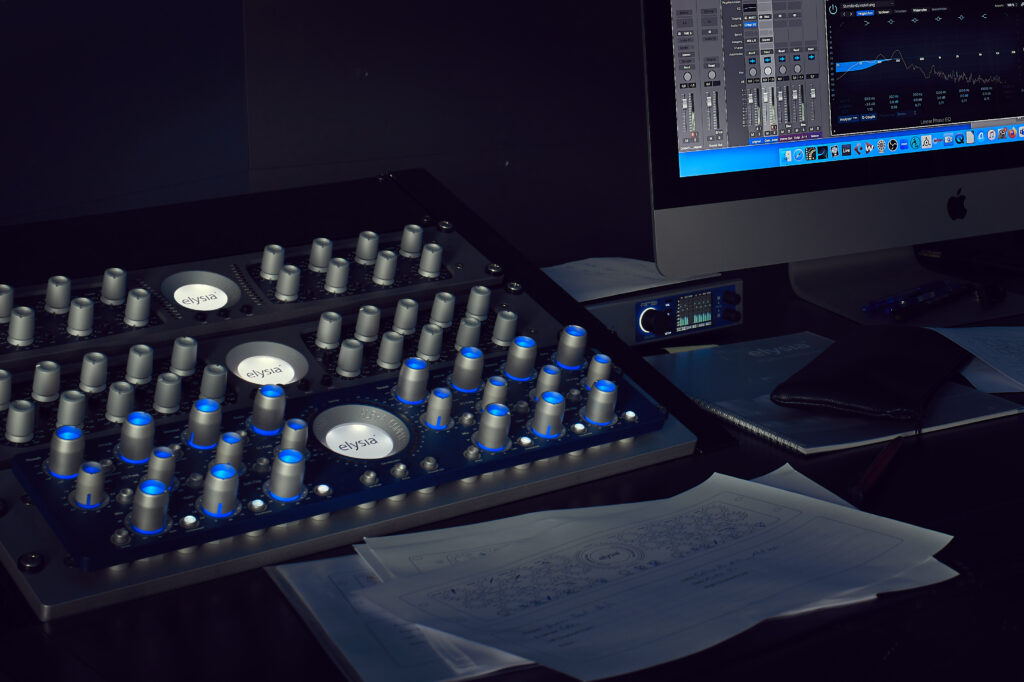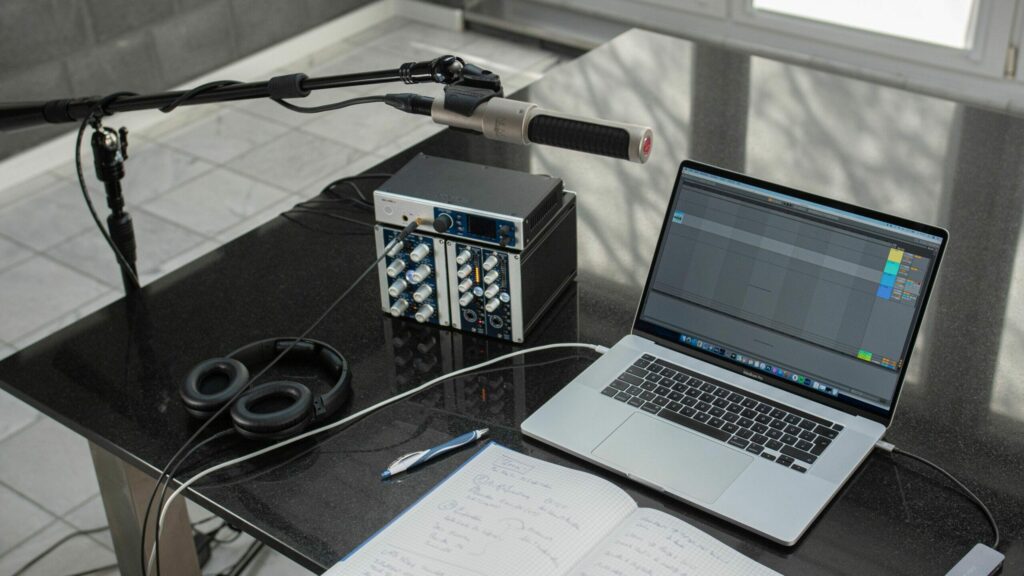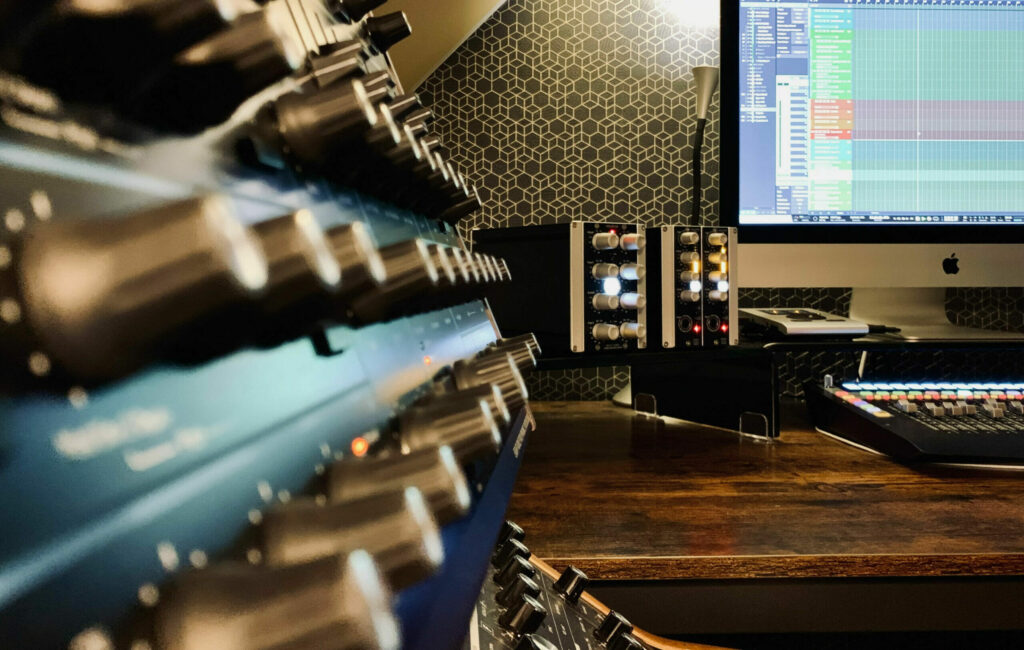The Renaissance – tips and tricks for mixing with headphones
A look on the street and in bus & train these days is enough to realize: The headphone is back! Those who have already arrived in the autumn of life feel pushed back to the time of the 80s. The Sony Group first established the location-independent availability of music on a grand scale with its legendary Walkman. Back then, however, the music selection was limited to the number of compact cassettes you were willing to lug around. Nowadays, thanks to modern data transmission via the mobile network combined with numerous streaming providers. Location-independent access to music, podcasts and radio plays are virtually unlimited. Together with the trend toward more home offices, this has given headphone sales an additional boost.
Headphone Sales
Ten years ago, just under nine million headphones were sold annually in Germany. In 2015, the figure was already 11.4 million units – with a clear upward trend! What surprises is that sound quality is listed as the most important purchase criterion. Way ahead of the “design and price” categories. Consumers currently prefer to buy high-quality headphones instead of monstrous hi-fi tower speakers with imposing speaker cabinets.
The arguments for investing in headphones are many and varied. Sound alone is not always the decisive factor. Headphones are now also a lifestyle product, where design and brand affiliation play a weighty role for some users. Sometimes it is also special features, such as noise cancelling, that move a certain model into the shopping cart. If you travel a lot and use trains and planes, you won’t want to miss the automatic suppression of ambient noise (noise-canceling). Effective noise canceling filters out the annoying ambient noise from the useful signal, and the user is not tempted to compensate for noise with a higher listening volume.
A further aspect of our reality in life is communication with cell phones and tablets. In line with this trend, most mobile devices come with matching in-ear headphones. This is having a lasting impact on media use, especially among young people. According to a JIM Study in 2020, the smartphone is by far the most popular device among German youngsters for connecting to the Internet.
Spotify
At the same time, the distribution of Internet use in terms of content has shifted noticeably within ten years. While 23% of young people used the Internet for entertainment purposes (e.g., music, videos, pictures) in 2010, this figure rose to 34% in 2020. According to the JIM study, the streaming service “Spotify” is more popular among young people than Facebook for example. With a look at these facts, it should be clear: Headphones are back and as musicians, sound engineers and mastering engineers, we have to ask ourselves whether we are responding adequately to this trend?
More devices = more mixing decisions?
With the sheer number of different mobile devices, the question inevitably arises as to whether special consideration needs to be given to these devices when mixing and mastering? It used to be simpler. There were the duos “tape & turntable” and “hi-fi speakers & headphones”. Today, the number of different devices and media seems almost infinite.
Vinyl Record players, CD players, MP-3 players, smartphones, tablets, desktop computers, laptops, wi-fi speakers and active battery Bluetooth speakers. Some consumers own a hi-fi system worth a condo, while others consume music through their smartphone’s built-in mini-speakers.
The range is extremely wide, leaving you with an uneasy feeling when mixing whether the mix will sound good on any device. There will probably not be a generally valid answer. However, those who know their “customers” can draw their conclusions. If you produce rap music for a youthful crowd, you should definitely check your mix via smartphone speakers and standard in-ear headphones. Widely they are included with every iPhone or Samsung phone.
The perfect listening environment – headphones?!
In the 80s, the Hifi tower with two large loudspeakers was the ultimate in music entertainment. The music lover sat there then in the perfect stereo triangle and has listened to the music there. According to this example nearly all music studios are still built today. Two loudspeakers in an acoustically optimized room for recording and mixing.
But even then, the room acoustics in the hi-fi living rooms were anything but perfect. Depending on the nature of the surfaces, windows and room geometry, an optimal condition was never possible there. Many compromises were made and especially in the bass range, the room has a formative role and is rarely linear. Then the different loudspeaker models still sound very different, a standard reference therefore does not exist. So if, in the worst case, the studio acoustics and the room acoustics of the listener are not optimal, the music experience is already very clouded soundwise.
Nowadays, perfect listening situations at home are becoming less and less common. The number of different speaker systems is unmanageable and many playback systems are designed more for background sound.
For the real music lover with a demand for quality, headphones have established themselves as the listening system. Customers are also willing to spend more money if this enables an increase in quality.
Disadvantage of studio monitor speakers
Studio stereo monitor speakers come in all sizes and variations and are available in active and passive versions. The difference between studio monitors and studio headphones results from the fact that studio monitors never act in isolation from the room acoustics. Room acoustics have a significant impact on the performance of studio monitor speakers.
The better the room acoustics, the better the performance of the monitors. The room acoustics have a large part in the frequency response of the loudspeaker. This may be linear in the test lab, but anything but perfect in an acoustically unfavorable environment. Then even buying the next better model is no real help, the acoustics don’t change there. Mixes made in unfavorable rooms often also have problems in the bass. Either there is a frequency range that is missing or is exaggerated. Also, spatial imaging is disturbed by first reflections.
Consideration
Then there are other practical considerations. What noise can I make in my room without disturbing a roommate or neighbor? At what times can I work? Is it possible to make the room acoustically perfect and what costs can I expect? Especially for many home studios these are important questions.
The question here is whether it would make sense to make the mix directly with headphones and then check whether this mix also works on other speaker systems. The likelihood of enjoying the music on better headphones is higher than on a high-end speaker in optimal placement.
Therefore, it would make sense to make the best sound for the headphones right away. This way the listener has almost the same listening experience, possibly even with the same headphone model. It sometimes takes many years for someone to get a balanced and good stereo mix in an unfavorable acoustic environment. With headphones, this is possible much faster.
If other music is also heard with these, the reference is directly there and a comparison is easier.
Through laptops, music production has become more mobile and possible in many places, with headphones the same listening situation is available everywhere.
Especially the bass range can be judged very well with headphones, the frequency response goes very deep and is reproduced without distortion.
What should you pay attention to
A headphone mix is always an unnatural listening environment. Why is that? Here’s a little experiment. Sit in front of your studio monitors or hi-fi system and move your head quickly from left to right and back. While you are moving, you will hear a slight flanging or comb filter effect. If you repeat the same movement under headphones, you will notice that the sound remains identical. No matter in which position your head is.
The reason for this is quickly explained: when you listen to music through headphones, the signal lacks the natural crosstalk that is always present in normal speaker signals.
Even if you sit in front of your monitor speakers in a perfect stereo triangle, the left ear will still hear sound from the right monitor and vice versa. The head never completely blocks sound events from the opposite side. This would also be fatal, because only thanks to the ears and the ability for acoustic localization our ancestors could recognize from which direction the saber-toothed tiger was approaching. Binaural hearing is a basic prerequisite for an aural sense of direction.
Historical evolution
If danger approaches from the left, its sound first reaches the left ear. The right ear, on the other hand, perceives the sounds at a reduced level and also with a slight time delay. The distance between the ears creates a difference in the time of flight, which enables our brain to extrapolate the direction of sound incidence. Phylogenetically, listening via studio monitors is more natural than via headphones. Only, the common prehistoric man was a hunter-gatherer and not a music producer concerned about missing crosstalk. Producers should know about these issues, however, because in an acoustically problematic room, studio monitors excite many unwanted room reflections that complicate mix decisions.
Example: In a large room, our binaural hearing can very well distinguish between direct sound and reflections as soon as the temporal distance between direct sound and reflections is large enough. However, this abstraction performance of the brain consumes a lot of attention resources. Mixing and mastering in such an environment are latent permanent stress for our hearing and should be remedied by sustainably improving the acoustics of the room. How should producers and musicians react to this fact if they regularly work in different places with different room acoustics? As an immediate measure, it is preferable to reach for studio headphones! Because apart from the lack of crosstalk, headphones have several features that recommend them for music productions.

Pro-Phones!
The great advantage of headphones is that they always offer the same acoustic landscape. Therefore, it does not matter where you are with them. Headphones offer a tonal home that provides an identical working basis day after day. If you are a producer or sound engineer who travels a lot, you should definitely get a pair of good studio headphones. No matter how bad the monitoring conditions may be in a studio, on a streaming job or at an FoH place in a reflection hell called „Town Hall”: headphones provide a reliable reference that users can always fall back on.
When mixing with headphones, what do I need to keep in mind?
After we have evaluated the technical requirements for the best possible headphone mix, here is a short summary of what you should keep in your mind when mixing with headphones. The mix on headphones always sounds a bit more striking and bigger compared to conventional monitors. Hard panning (left/right) sounds more drastic and extreme than on monitors due to the lack of crosstalk. Therefore, creating a natural stereo image and making panning decisions is more difficult on headphones.
On the other hand, minimal mixing errors and noises are much easier to localize on headphones. Headphones are also ideal for editing vocal or drum tracks. For longer sessions, it makes sense to switch between headphones and monitors more often. Especially with headphones, the risk of fatigue and too high levels are always present. In home studios, vocals are often recorded in the same room where the studio equipment is located. Here, a good pair of headphones is also important to directly assess the artist’s performance. With experience, analog processing can also be used directly here during the recording, because this can be immediately evaluated acoustically.
Which headphones are perfect for me?
For mixing tasks and studio use, studio headphones are generally better than consumer models. Quite a few consumer models prefer to sound “fat” instead of being an aid in mix decisions. Therefore, reaching for studio headphones is always preferable. Now there is another decision to make and that concerns the construction type. What should it be? Closed, semi-open or open? I’m not talking about the status of your favorite club, but the design of the earcup.

Closed headphones like the beyerdynamic DT770 Pro have the advantage that hardly any sound penetrates from the outside and the listener itself hardly emits any sound to the outside. Closed headphones are therefore particularly suitable for tracking in the studio. The spillover of other instruments into the headphones is suppressed and a loud click track does not spill over into the vocal microphone when singing. In addition, closed headphones work well in noisy environments and people around do not feel disturbed, since hardly any sound penetrates to the outside. Due to their design, closed headphones have some disadvantages when it comes to achieving the most linear sound possible. The closed ear cup always creates a pressure buildup, especially at low frequencies. This is one reason why (semi-)open headphones often have a more natural bass response, generally sound more “open – airy” and also boast better impulse fidelity.
Which headphone for which task
During long working days, the (semi-)open models offer better wearing comfort due to good airflow (air exchange through the open earcups), which is particularly advantageous at higher temperatures. The open models, on the other hand, have the disadvantage that they audibly emit sounds to the outside and accordingly offer only a small separation between the useful signal and ambient noise in a noisy environment. The right choice therefore also depends on the preferred application. For pure mixing tasks in a studio room without ambient noise, open headphones are a good choice, while closed headphones are recommended for tracking at tape volume.
In addition to working in the studio with headphone amplifiers with a lot of torque, there is also the application that you want to listen to your mix via smartphone. It makes sense to use headphones with the lowest possible impedance (ohms). Our example DT 770 Pro headphones are available in three different ohm versions (32, 80 or 250 ohms). As a rule of thumb, the higher the ohm, the more voltage the headphone amplifier has to apply to generate a decent level. This means that if you want to use your headphone on a smartphone, laptop or tablet, you should preferably add a low-impedance version to your shopping cart.
Conclusion
It is worth considering buying a very good pair of headphones for studio work and learning to record and mix with them. The cost is only a fraction of what very good speakers and room acoustics cost.
Therefore, it makes more sense to invest the money saved in audible improvements to the signal chain such as microphones, preamps, sound generators and analog outboard processing. With a good pair of headphones, the differences in these improvements can be quickly noticed. These improvements can also be heard directly in the music and that, after all, should be the goal of the measures.
What are your thoughts on this subject? If you like this blog post, please share this post with your friends.
Thanks for reading!
Your Ruben Tilgner




